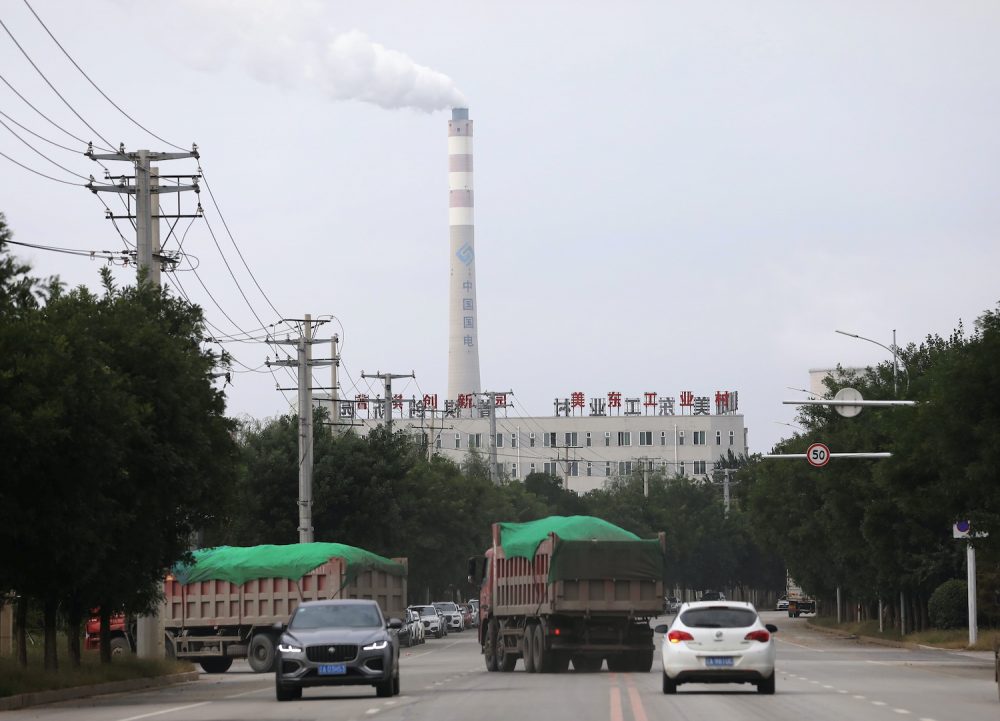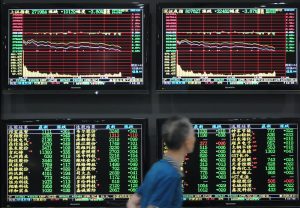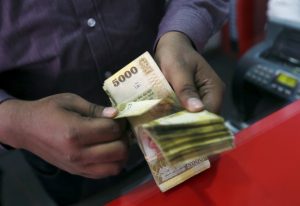China on Wednesday demanded railway companies and local authorities raise their game in shipping vital coal supplies to utilities, as regions key to the world’s no. 2 economy grapple with power cuts that have crippled industrial output.
The order, from China‘s powerful state planner, comes after a collision of tight coal supplies, tougher emissions standards and strong manufacturing demand has pushed the price of coal, the biggest source of China‘s electricity, to record highs – just as winter approaches.
Thermal coal futures in China hit an all-time high of 1,376.8 yuan ($212.92) per tonne earlier on Wednesday, adding yet more pressure on power utilities unable to recoup added fuel costs. Curbs have been imposed on power use in large swathes of the country, especially three northeastern provinces that are home to nearly 100 million people.
“If there’s a power cut in the winter then the heat stops too,” said Fang Xuedong, 32, a delivery driver in Shenyang, the capital of Liaoning province, which is a 90-minute flight northeast of Beijing.
“I have a kid and an elderly person at home, if there’s no heat then that’s a problem.”
Growing alarm among residents at the power crunch, now in its second week, comes as the state planner – the National Development and Reform Commission (NDRC) – formally urged local economic planners, energy administrations and railway companies to beef up coal transportation to meet citizens’ heating demand during the winter season.
“Each railway company should strengthen coal transportation to power houses (utilities) with inventory of less than seven days and launch the emergency supply mechanism in a timely manner,” the NDRC said.
China, the world’s top coal consumer imported a total of 197.69 million tonnes of coal in the first eight months of 2021, down 10% year-on-year. But August coal imports rose by more than a third on tight domestic supplies.
Officials this week have repeatedly sought to assure residents that there will be power for household use and for heating as winter approaches.
But power rationing has been implemented during peak hours in many parts of the northeast since last week, with news reports and social media posts signalling outages of traffic lights and 3G communications networks in the region.
China is considering hiking industrial power prices to ease the supply crunch, some sources have reportedly said.
The NDRC said later on Wednesday the government would not stop electricity prices from floating within a reasonable range and would let them reflect market fundamentals and changes in cost.
In Guangdong province, a key industrial hub in the south, the Provincial Development and Reform Commission said in late August there was a plan was to increase the power tariff by 25% during the peak load period for non-residential users.
HIGH COAL PRICES BLAMED
The curbs also continue to affect heavy industry, such as metal production, and manufacturers.
An internal document from a large technology components maker in China reviewed by Reuters said more than half its daily production in Kunshan, in the eastern industrial province of Jiangsu, had been suspended since earlier this week.
Meanwhile in Foshan, in southern China‘s bustling province of Guangdong, the company was only allowed to produce late at night and in the early morning from mid to late-September, according to the document, which said manufacturers were “ambushed” with the new restrictions.
Li Shuo, a senior policy adviser for Greenpeace East Asia, called on China to reform its power sector to help it absorb price fluctuations and ensure stability.
“This power shortage will carry huge economic and political implications. But let’s set the record straight, the root cause is high coal price, NOT climate policies,” Li wrote in a Twitter post this week.
“If anything, the power shortage demonstrates the importance of moving away from coal, that a fuel that has been code word for energy security is not secure at all.”
COAL INVENTORY LOW
Small firms caught in the power and coal crunch are turning to diesel generators, or simply shutting shop, while coal officials have also voiced fears for stocks ahead of winter – as they scramble to send enough coal to electricity utilities to restore full supply.
The power shortages, now well into their second week, have affected large swathes of the country, especially three provinces in the northeast, such as Liaoning, that are home to nearly 100 million people.
Business owners in Shenyang, Liaoning’s capital city, said on Thursday they were losing money, as official data separately showed the country’s official measure of manufacturing contracted in September – for the first time since February 2020.
The strain on firms comes as the China Coal Industry Association warned in a statement that coal inventory at power plants is low, and it is “not optimistic” ahead of the winter peak demand season.
The association said it had asked companies to “spare no effort” to increase supply, and adjust sales strategy to those non-key, high energy consumption or non-long-term agreement signed users.
Employers at an industrial laundry facility in Shenyang reporters visited on Thursday had switched to diesel power generators due to the power crunch and was losing money.
Beyond cities and factories, China‘s farmers are also facing hefty losses, analysts and industry participants said, after the power outages hit production of key ingredients for animal feedstocks.
Meanwhile, Citi analysts said in a note they expect China‘s power shortages to persist through the winter, when demand for heating – mostly using coal-fired power – hits its peak.
• Reuters with additional editing by Jim Pollard
ALSO SEE:
China’s Power Crunch Begins To Weigh on Economic Outlook
China coal strategy hits importers and consumers, data show
China’s export hub Guangdong disrupted by power crunch, Covid
























